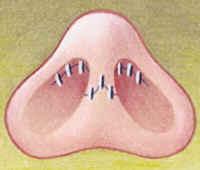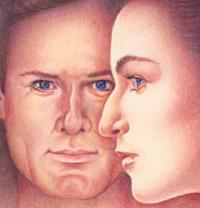BRA Day is an initiative designed to promote education, awareness and access for women who may wish to consider post-mastectomy breast reconstruction.
Rhinoplasty (Nose Job)
Rhinoplasty (nose reshaping) is applicable for patients who:
- have reached full facial development (typically 16 years of age)
- would like a change to the aesthetic appearance of the nose
- want to address breathing problems related to the internal nasal structures
It is important to know that with all surgical procedures, there are some limitations to cosmetic nasal surgery.
Considerations
In evaluating you for rhinoplasty, your plastic surgeon will examine:
- the inside and outside of your nose
- your skin quality
- the size and shape of the nose
Your plastic surgeon may also ask whether you have difficulty breathing through your nose, suffer from allergies or use nasal spray excessively.
Chin augmentation may be suggested to achieve a more harmonious facial balance.
Procedure
 With rhinoplasty, work is done on the cartilage and bone that form the structure of your nose. Sometimes, certain bones may need to be altered in order to make your nose look narrower and straighter.
With rhinoplasty, work is done on the cartilage and bone that form the structure of your nose. Sometimes, certain bones may need to be altered in order to make your nose look narrower and straighter.
If your nose needs to be augmented, this can be accomplished using cartilage from your nose or cartilage from another part of the body. The skin and soft tissues will re-position themselves over the new form of your nose.
In most cases, the incisions will be placed inside your nose so they will not be visible. If the base of the nose is narrowed or the nostrils reduced, small pieces of skin below the nostrils will be removed.
When external incisions are recommended, these are placed in well-hidden areas at the crease where the nose and cheek join or where the nose and the lip join.
Recovery and possible complications
You may experience skin numbness after rhinoplasty, but this is usually temporary.
Bruising is mostly gone after a week and concealing makeup can be used. Swelling, however, can last a number of weeks or months though residual swelling usually affects just the nasal tip.
Note that, on occasion, secondary surgery may be recommended to refine the result.


